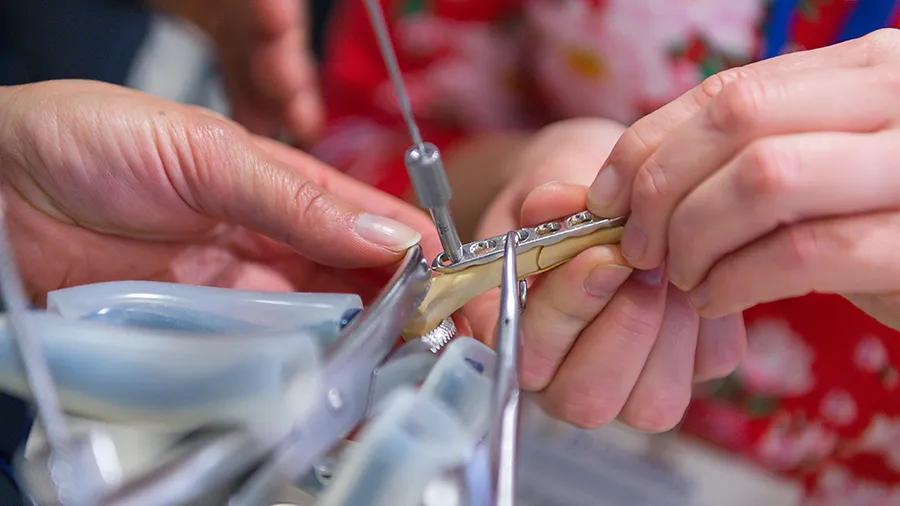Plate fixation with atlantoaxial arthrodesis
1. Principles/General considerations
Fractures of C2 (Axis) can occur in the axial dens (a) or the axial body (b), with or without involvement of the spinal canal.
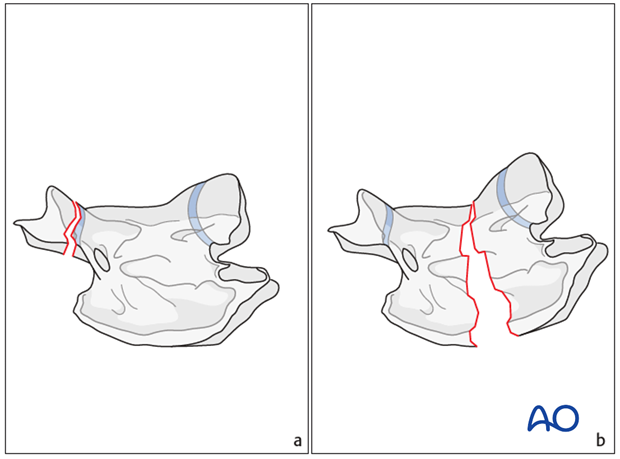
Axial dens
This fracture is most commonly seen in foals younger than 6 months:
- The physis closes by 8-12 months of age
- Most often the fracture occurs through the cranial physis of the axis
- The body of the axis moves ventrally
- Neurologic deficits depend on the degree and force of the spinal impact at the time of the injury
- Neurologic deficits range from a stiff gait to total tetraparesis or even sudden death
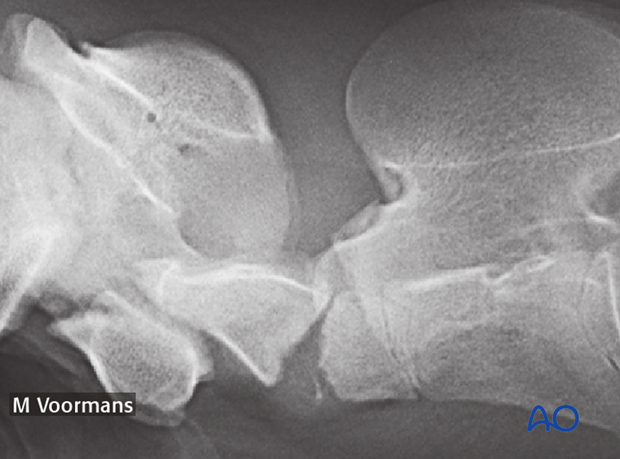
The radiograph shows the fracture of the dens in a foal.
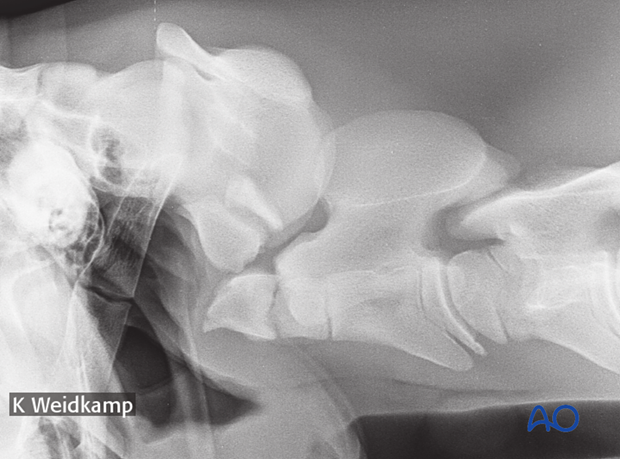
Note: Fixation of an axial dens fracture will require atlantoaxial arthrodesis.
2. Preparation and approach
This procedure is performed with the patient positioned in dorsal recumbency through the ventral midline approach to the cervical spine.
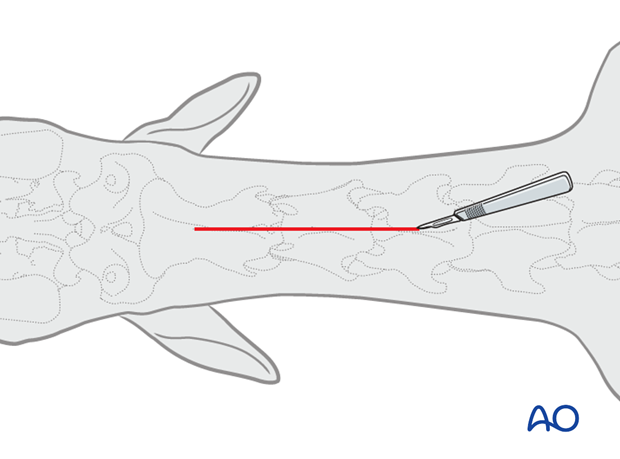
3. Reduction
Preparation of the bone
The ventral spinous process of the body of C2 is flattened slightly using a curved osteotome and bone rongeur.
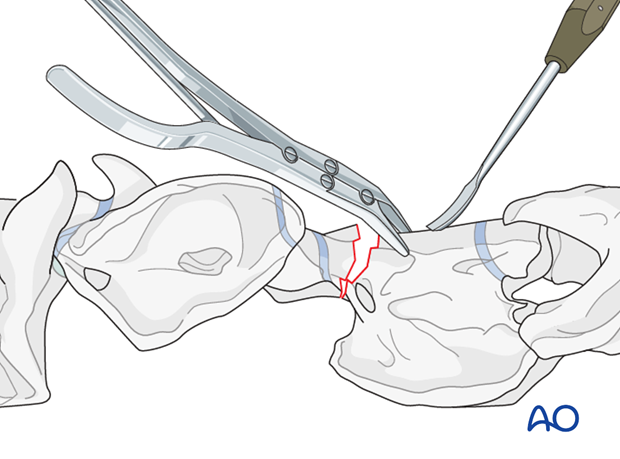
Reduction
After exposing the ventral surfaces of the atlas and axis, the alignment of the vertebrae is corrected and maintained with bone-holding forceps.
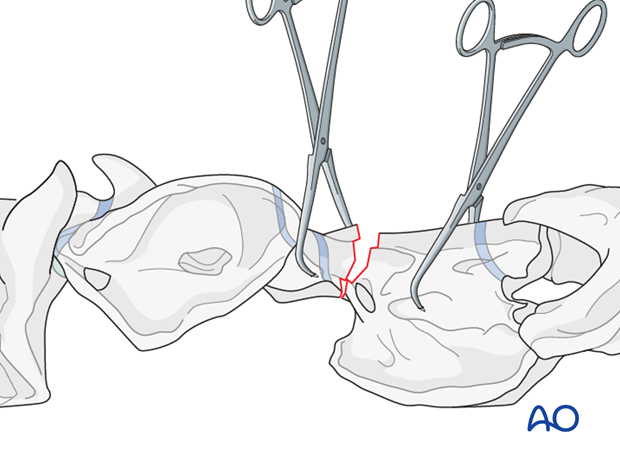
4. Fixation
Plate selection
The use of the locking compression plate (LCP) is preferred for fracture fixation of the vertebrae. According to the size of the patient, a small or broad 3.5/4.0 or 4.5/5.0mm LCP are used.
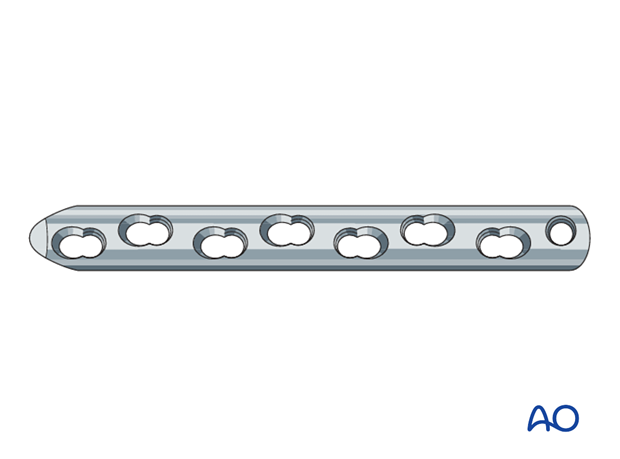
Alternatively, a human distal femur plate can be used to improve the stabilization of the atlas when an atlantoaxial arthrodesis is intended.
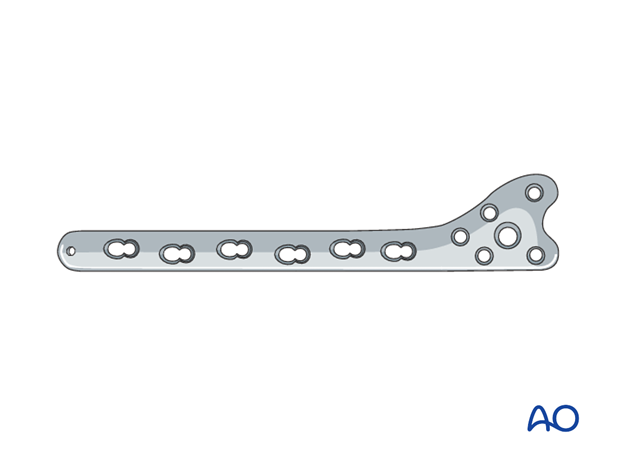
Plate preparation
Minimal plate bending is needed.
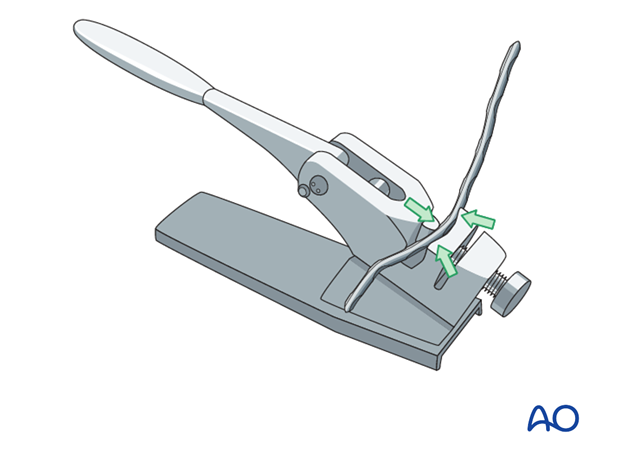
Plate application
With the reduction forceps in position, the appropriately sized plate is applied to the ventral aspect of C1 and C2.
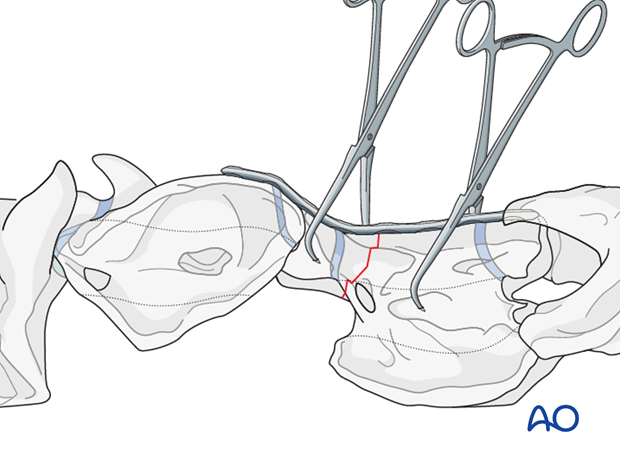
One cortex screw is inserted into each fragment in loaded fashion. The correct length of the screws is determined with the help of fluoroscopy.
Note: Attention must be paid not to damage the spinal cord.
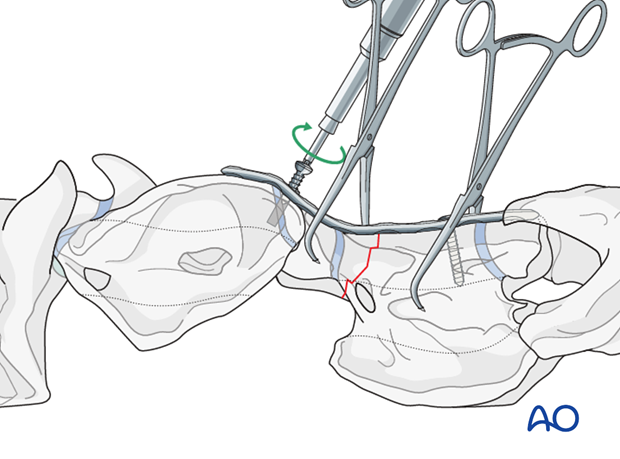
The remaining holes are filled with locking screws.
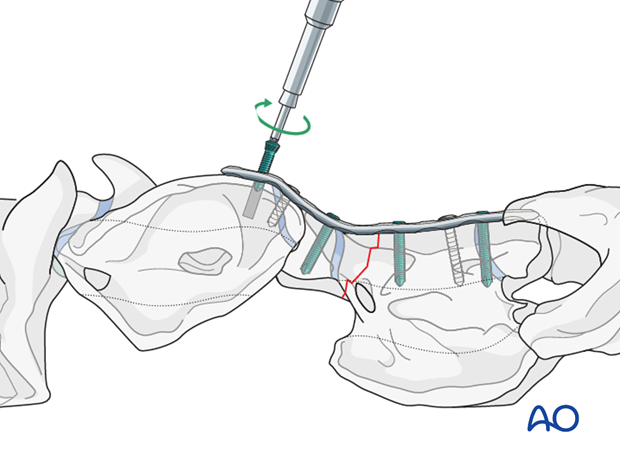
Final fixation.
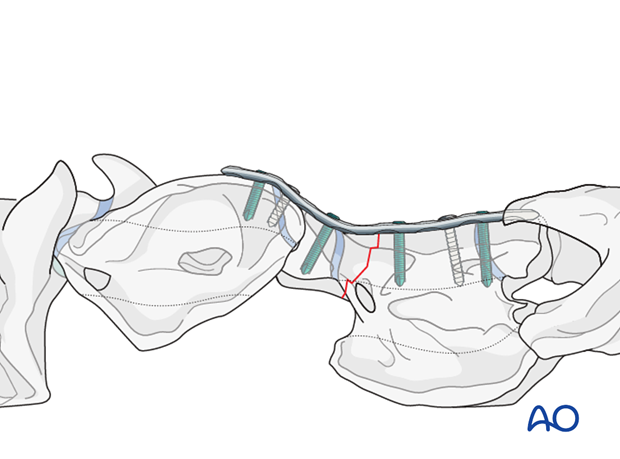
5. Closure
The muscles, subcutaneous tissue and the skin were closed in a continuous fashion. A close active drain can be placed at the level of the plate, exiting the skin near the incision and sutured to the skin.
A stent bandage is applied, and covered with an adhesive barrier drape to keep the incision clean and dry during recovery.
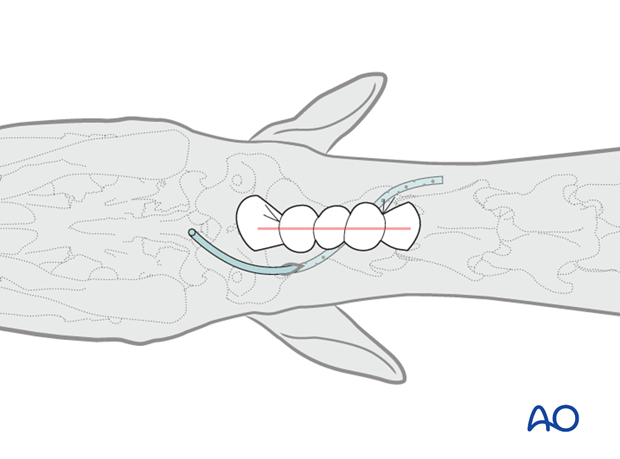
6. Case example
7-year-old Hanoverian Horse with a cranial C2 fracture not involving the dense, caused during a fall in a show jumping competition.
For the treatment of this fracture the same technique as described for a dens fracture would be applied.
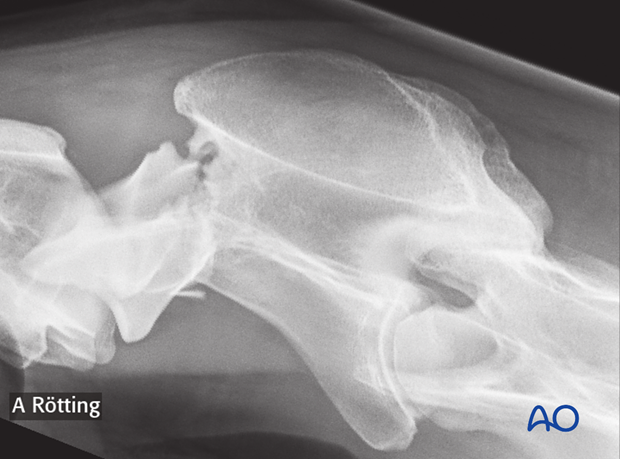
7. Aftercare
Following surgery, antibiotics and NSAIDs are routinely administered for 3 days. If indicated, they need to be continued.
Routinely follow up radiographs are taken immediately after surgery and after 2 and 4 months.
The rehabilitation protocol includes 2 months of stall confinement, followed by 1 month of hand-walking, and 2 months of progressive exercise.
Only when the ataxia has completely disappeared, the horse can return to training or other activities.
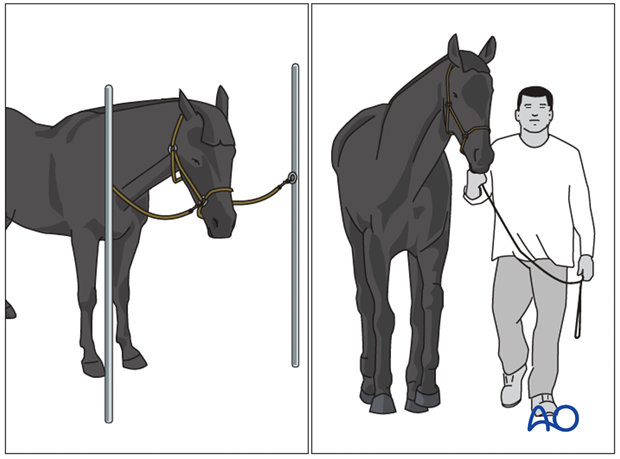
Implant removal
There is no need for implant removal, except in cases of implant loosening or surgical site infection.
